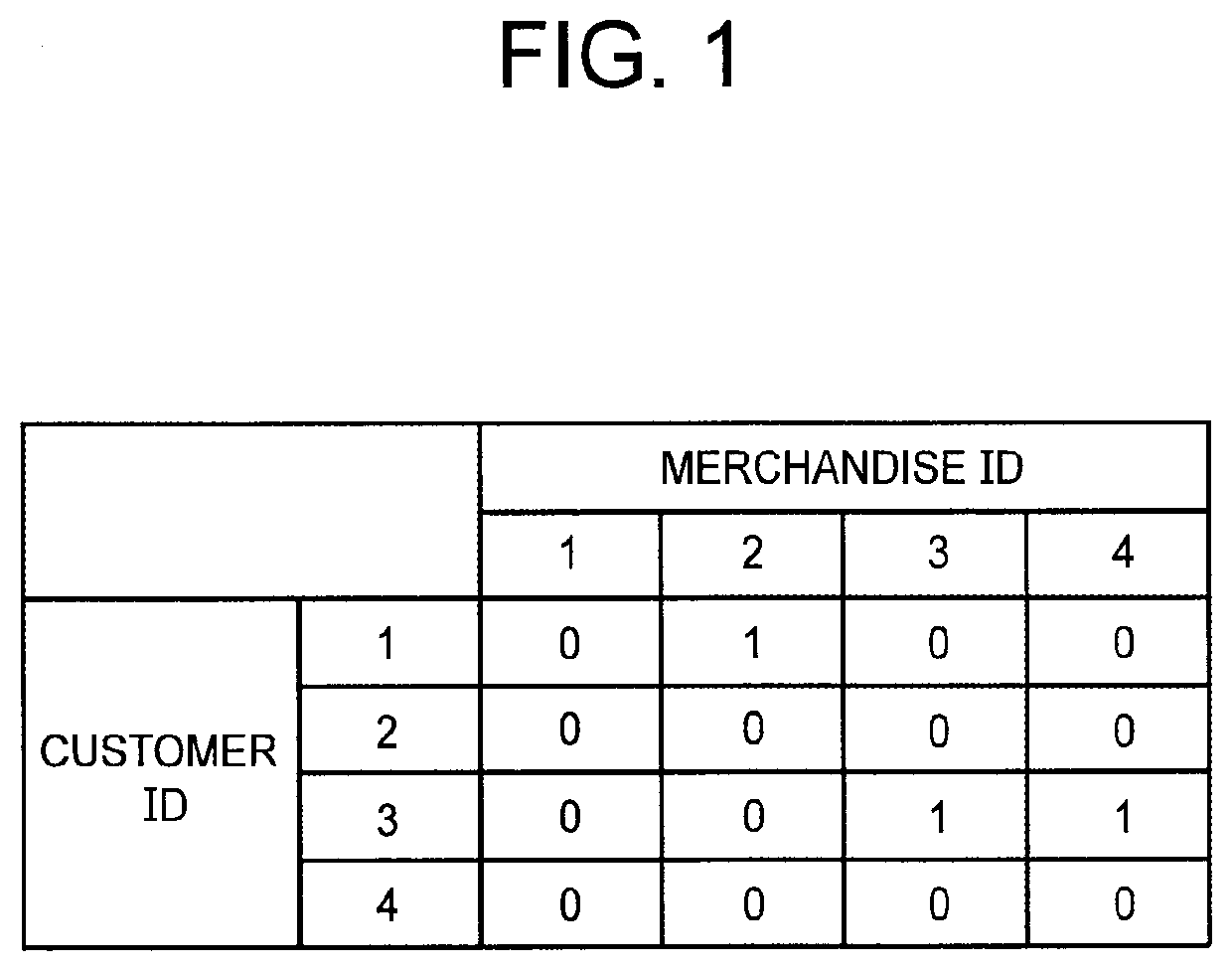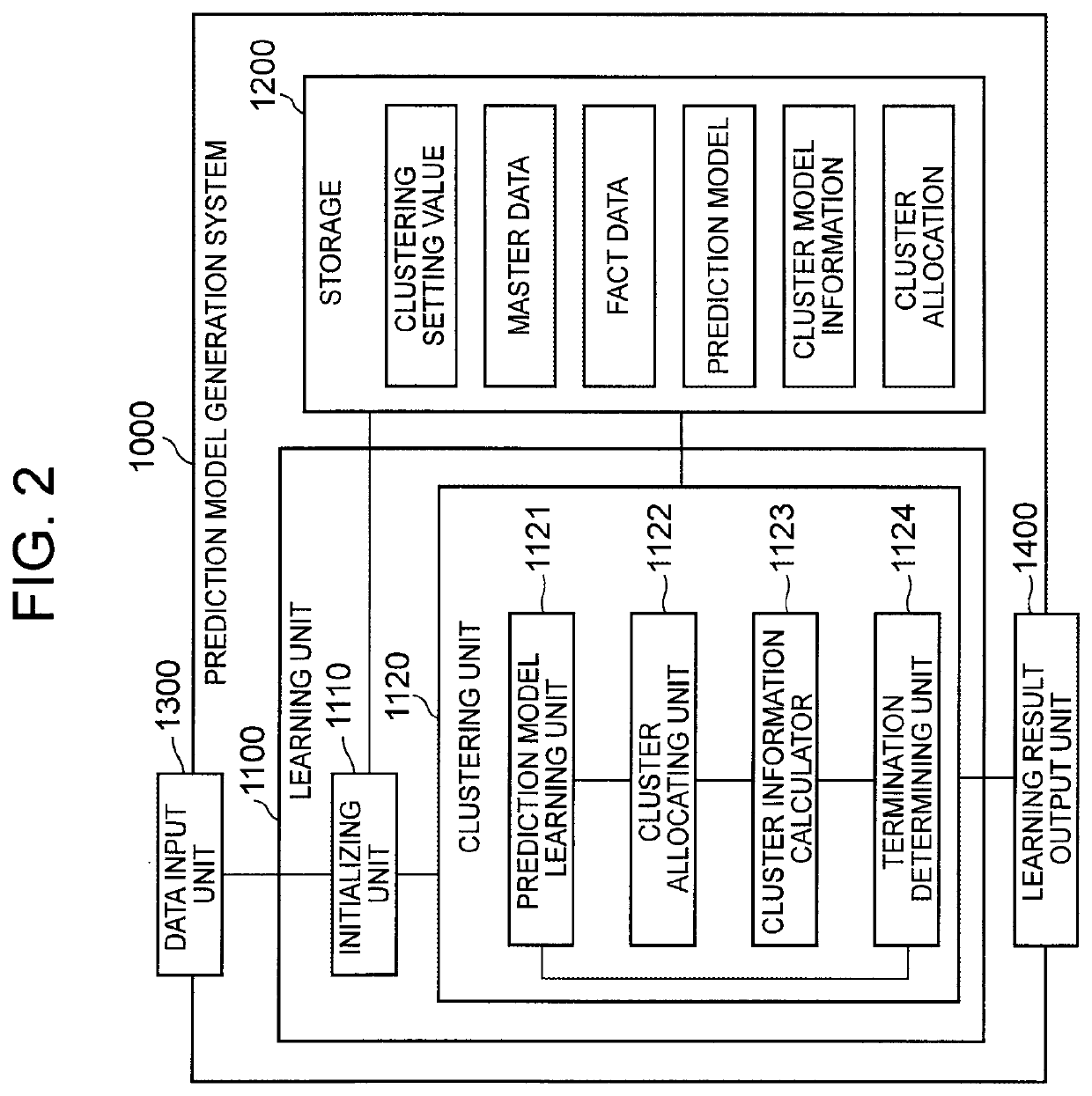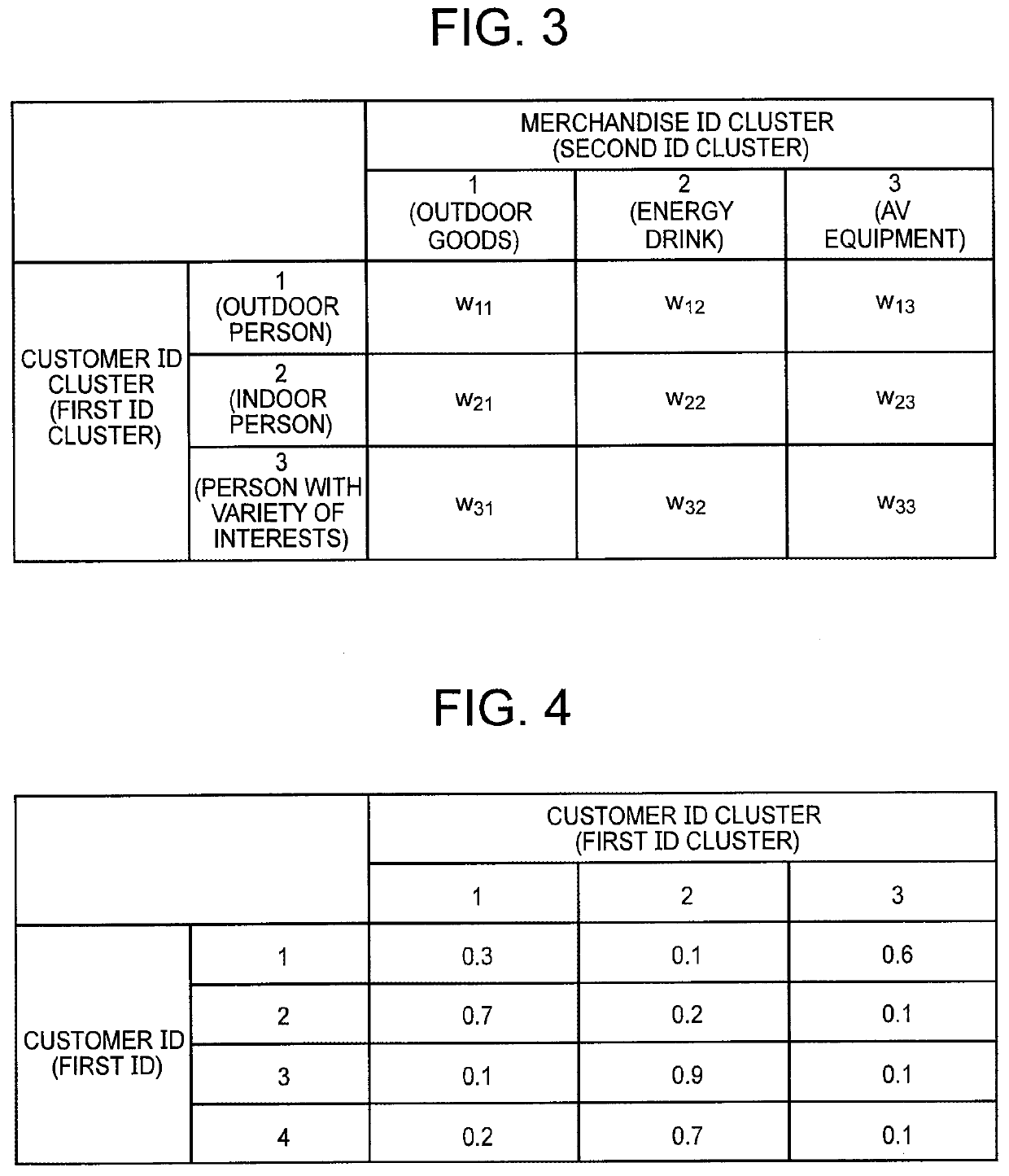Prediction model generation system, method, and program
a prediction model and model technology, applied in the field of prediction model generation system, prediction model generation method, and prediction model generation program, can solve the problems of low prediction model accuracy and prediction model obtained as described above, and achieve the effect of accurate prediction
- Summary
- Abstract
- Description
- Claims
- Application Information
AI Technical Summary
Benefits of technology
Problems solved by technology
Method used
Image
Examples
exemplary embodiment 1
[0046]FIG. 2 depicts a functional block diagram illustrating an example of a prediction model generation system according to a first exemplary embodiment of the present invention.
[0047]A prediction model generation system 1000 according to the first exemplary embodiment includes a data input unit 1300, a learning unit 1100, a storage 1200, and a learning result output unit 1400. The learning unit 1100 includes an initializing unit 1110 and a clustering unit 1120. The clustering unit 1120 includes a prediction model learning unit 1121, a cluster allocating unit 1122, a cluster information calculator 1123, and a termination determining unit 1124.
[0048]The prediction model generation system 1000 performs co-clustering on first IDs and second IDs on the basis of first master data, second master data, and fact data that have been input. A cluster of the first IDs is referred to as a first ID cluster. In addition, a cluster of the second IDs is referred to as a second ID cluster. The firs...
exemplary embodiment 2
[0139]A prediction model generation system according to a second exemplary embodiment of the present invention performs co-clustering, and then generates a prediction model for each combination of a first ID cluster and a second ID cluster. In the present exemplary embodiment, a description is provided by using, as an example, a case where the prediction model generation system generates the prediction model and then predicts a relationship between IDs by using the prediction model.
[0140]FIG. 9 depicts a functional block diagram illustrating an example of the prediction model generation system according to the second exemplary embodiment of the present invention. A prediction model generation system 2000 according to the second exemplary embodiment includes a data input unit 2001, a co-clustering unit 2002, a prediction model learning unit 2003, a prediction unit 2004, a result output unit 2005, and a storage 2006.
[0141]The storage 2006 is a storage device that stores various types ...
exemplary embodiment 3
[0177]In contrast to the prediction model generation system 1000 described in the first exemplary embodiment, the prediction model generation system 2000 described in the second exemplary embodiment does not repeat prediction model generation processing and co-clustering processing, but generates a prediction model after co-clustering is completed (see FIG. 10).
[0178]Similarly to the first exemplary embodiment, a prediction model generation system according to a third exemplary embodiment of the present invention repeats the processes of steps S3 to S6 so as to perform co-clustering on first IDs and second IDs and generate a prediction model for each combination of a first ID cluster and a second ID cluster. Further, when a first ID and a second ID serving as targets for prediction of a relationship between two matters are specified, the prediction model generation system according to the third exemplary embodiment of the present invention predicts a relationship between the first I...
PUM
 Login to View More
Login to View More Abstract
Description
Claims
Application Information
 Login to View More
Login to View More - R&D
- Intellectual Property
- Life Sciences
- Materials
- Tech Scout
- Unparalleled Data Quality
- Higher Quality Content
- 60% Fewer Hallucinations
Browse by: Latest US Patents, China's latest patents, Technical Efficacy Thesaurus, Application Domain, Technology Topic, Popular Technical Reports.
© 2025 PatSnap. All rights reserved.Legal|Privacy policy|Modern Slavery Act Transparency Statement|Sitemap|About US| Contact US: help@patsnap.com



